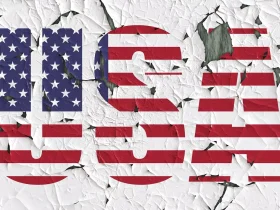Heavy Metal Tariffs: Economics Meets Politics
The newly proposed 50% tariffs on copper, aluminium, and steel imports aren’t just about correcting trade imbalances—they’re deeply rooted in former President Donald Trump’s Make America Great Again (MAGA) ideology. These sweeping levies, set to take effect August 1, mirror Trump’s push to restore America’s industrial prowess and energize his working-class voter base.
According to David Stritch, a senior FX analyst at Caxton, these tariffs are “primarily a political motivation,” aimed at reclaiming control over industries once dominated by the U.S. but now largely outsourced to countries like Chile (for copper) and China (for aluminium and steel).
Trump’s Industrial Patriotism: A Longstanding Theme
Trump has consistently positioned steel and aluminium as pillars of national strength. Back in 2018, during his first term, he argued that these materials were essential for both economic resilience and national security.
“A strong steel and aluminium industry are vital to our national security. Absolutely vital,” he stated.
He went further, saying:
“Steel is steel. You don’t have steel, you don’t have a country.”
This tough rhetoric resonated in Rust Belt regions—areas filled with shuttered factories and once-booming steel towns now reduced to economic distress.
Copper: Critical Yet Vulnerable
Although copper hasn’t historically shared the same patriotic symbolism as steel, it’s emerging as a critical strategic resource, especially for tech and green energy industries. Currently, the U.S. imports nearly 50% of its copper—mostly from Chile and Canada.
Copper prices initially soared in July following Trump’s tariff announcement. But as of late July, U.S. copper futures plummeted 20%, settling near $4.55 per pound—the biggest one-day drop on record. The decline followed Trump’s unexpected decision to exempt raw copper materials like concentrate and cathodes from the levy, which somewhat eased fears of a supply crunch. However, finished goods, such as copper wire, sheets, and piping, will still be subject to the new tariffs.
Tariff Fallout: Domestic Prices and Industry Shockwaves
Steel and aluminium tariffs are also doubling—rising from 25% to 50%, leading to a significant spike in U.S. domestic metal prices. With cost-competitive imports effectively cut off, American manufacturers are dealing with tighter supply chains and rising costs, prompting many to reconsider reshoring their production.
Despite these bold measures, the desired production boom hasn’t materialized. By 2024, U.S. steel output was actually 1% lower than in 2017, before Trump’s original tariffs. Meanwhile, aluminium production declined by nearly 10%, casting doubt on whether tariffs alone can restore U.S. dominance in heavy manufacturing.
Manufacturing Margins Under Pressure
Analysts now warn that Trump’s tariff plan could raise manufacturing costs by as much as 4.5%, squeezing profitability in industries like electric vehicles, consumer appliances, and construction.
This comes at a sensitive time, especially for green energy sectors, where copper, aluminium, and steel are essential components. Electric vehicle makers, already grappling with thin average profit margins of 5%, could bear the brunt of higher input costs.
A Century of Industrial Decline: From Boom to Rust
In the early and mid-20th century, the United States led the world in the production of copper, steel, and aluminium. But global competition, aging infrastructure, rising labor costs, and a strong dollar gradually eroded its leadership.
- Copper: Once a U.S. stronghold, this industry is now led by Chile, which holds the top global production rank.
- Steel: U.S. output peaked in the 1970s, but recessions, outdated mills, and foreign competition have since decimated the industry.
- Aluminium: America’s dominance began fading in the early 2000s, with China now the world’s leading producer.
These shifts disproportionately impacted blue-collar workers, particularly non-college-educated men in traditional manufacturing hubs—many of whom form the core of Trump’s political base.
Tariff Repercussions for the Green Economy
The increasing cost of core industrial metals will ripple through sectors essential to the energy transition. Solar panels, wind turbines, EVs, and batteries all depend heavily on aluminium, steel, and copper.
As David Stritch points out, these industries could suffer the most:
“With high inputs of all three materials and the fragility of the electric car market, EV producers may endure the worst of the increased input costs.”
This may dampen U.S. ambitions to lead in climate innovation, as green-tech companies are forced to choose between higher prices, lower margins, or relocating manufacturing.
Will MAGA Metal Policies Deliver Results?
Whether these aggressive tariffs will revive American industry remains to be seen. While they may appeal to Trump’s political base, the economic data doesn’t yet support a renaissance in domestic manufacturing. Instead, the short-term effect appears to be higher costs, supply chain disruption, and market volatility.
However, with elections approaching and rhetoric heating up, these policies are likely here to stay—at least for the near future.






